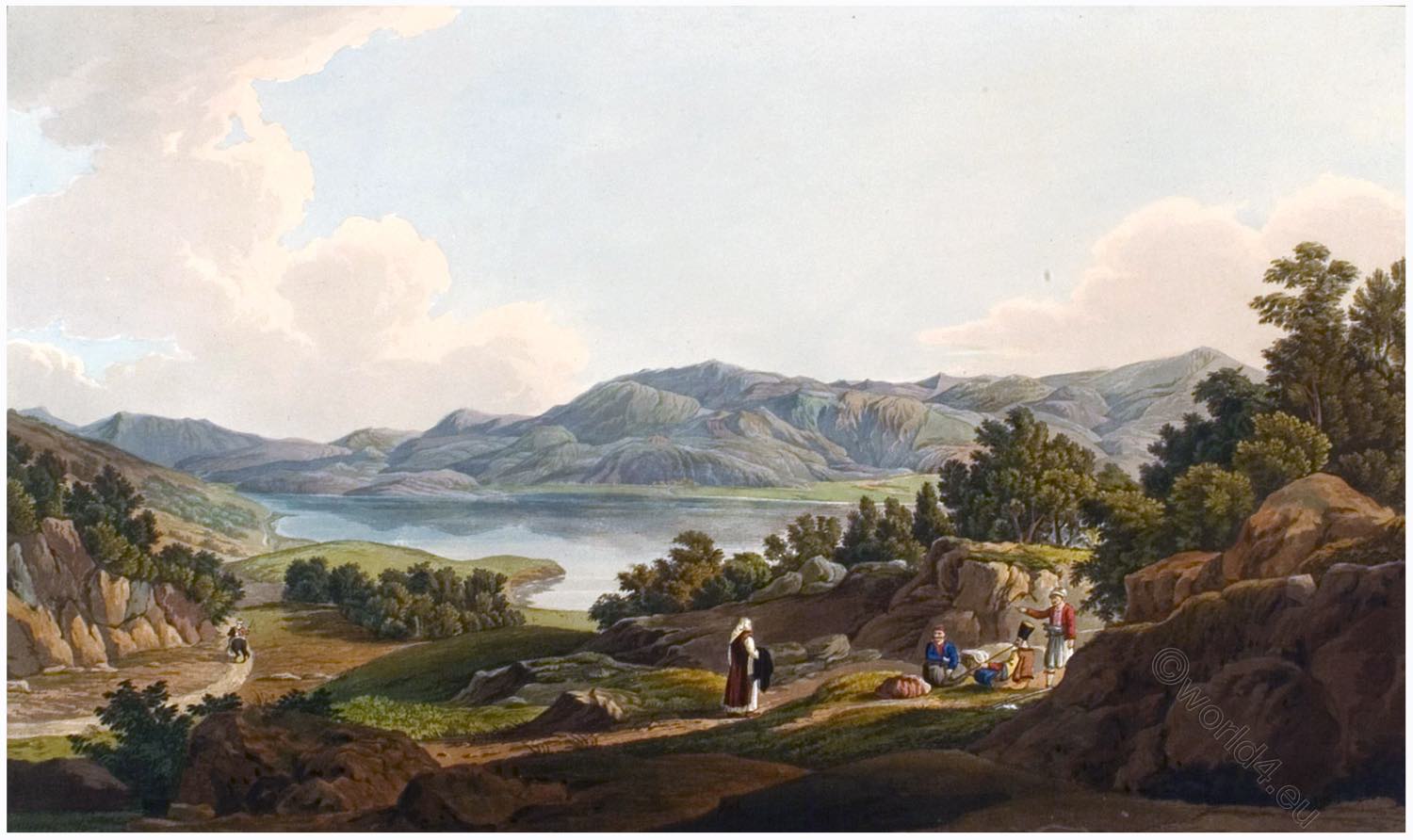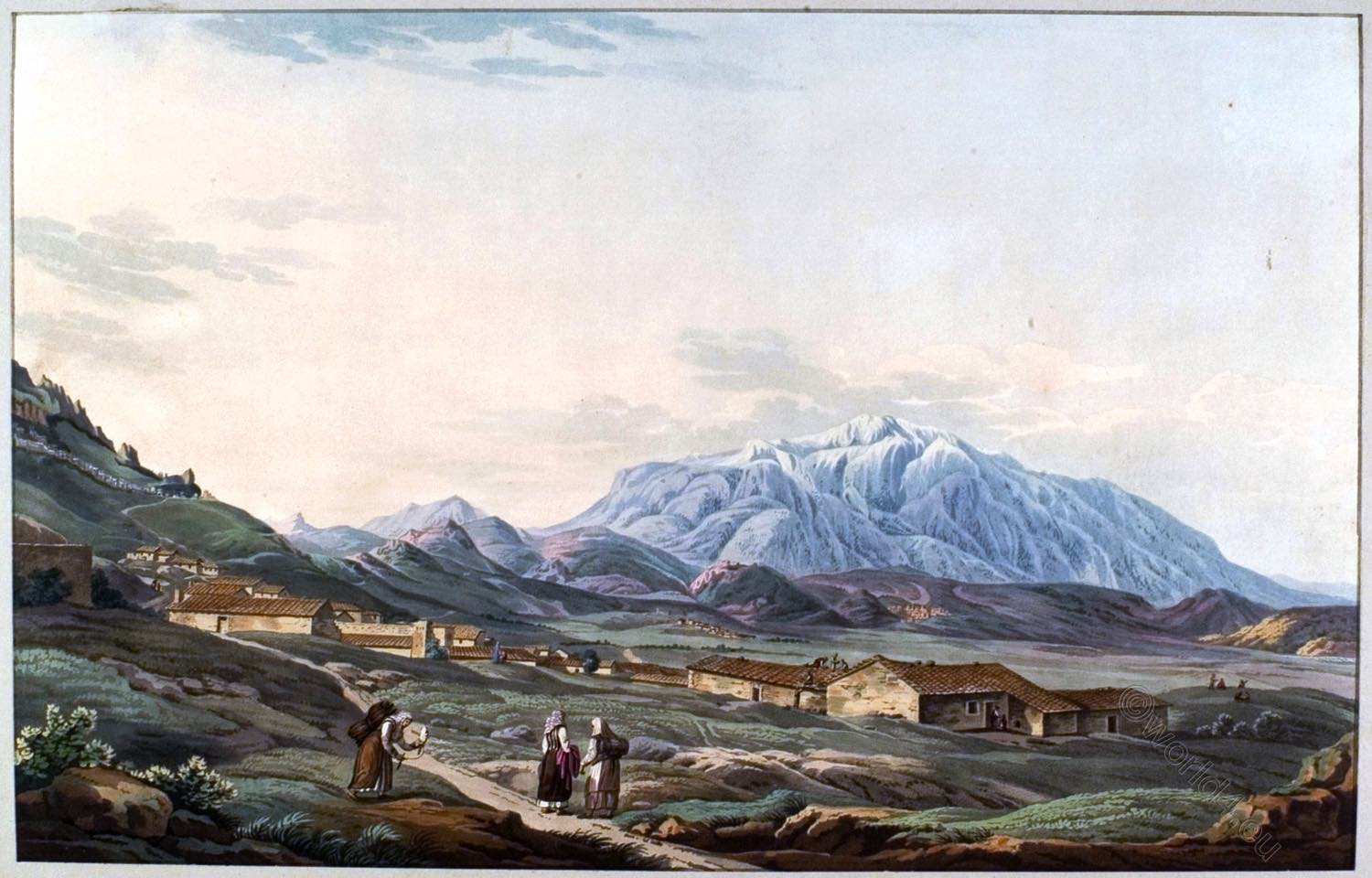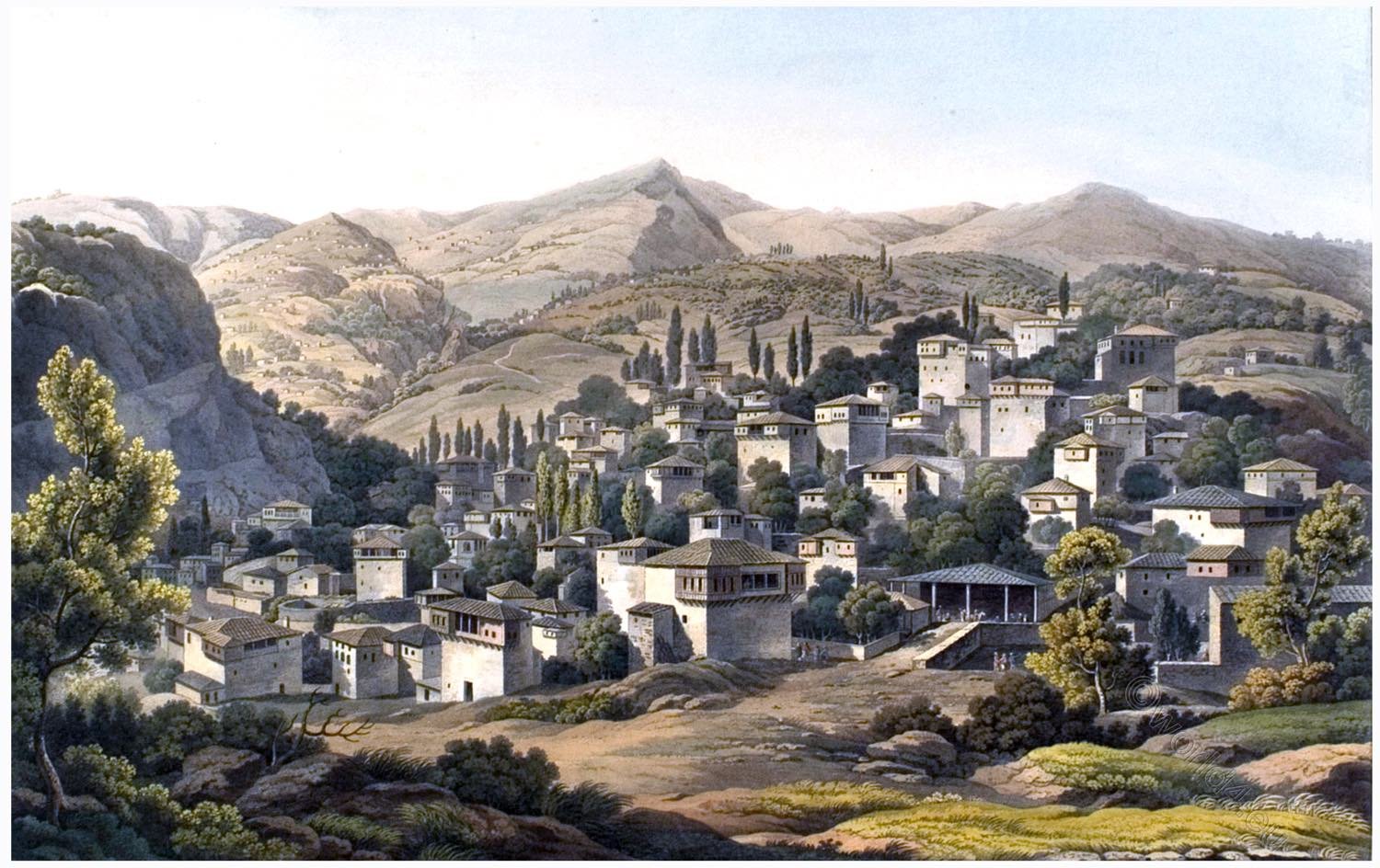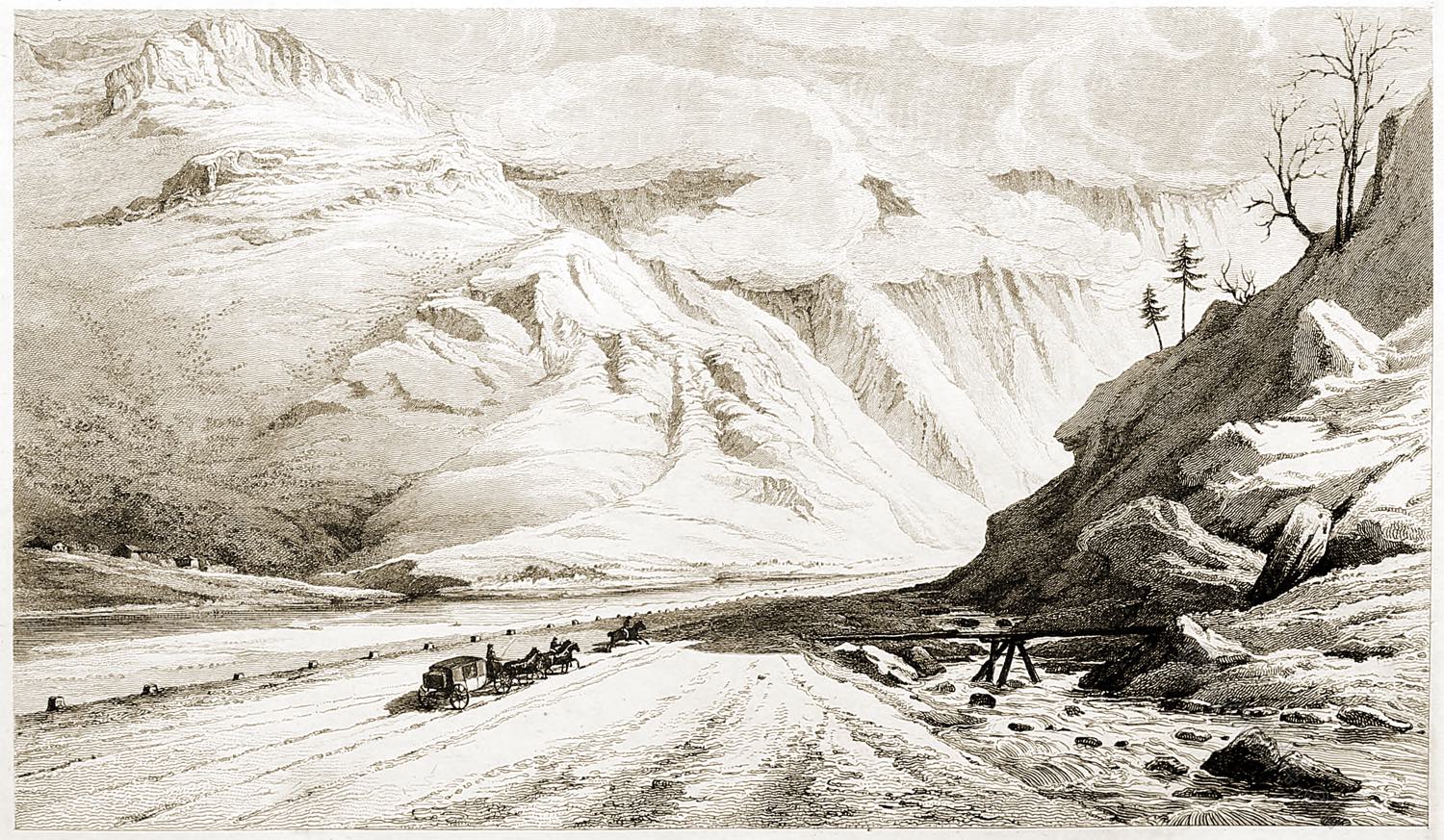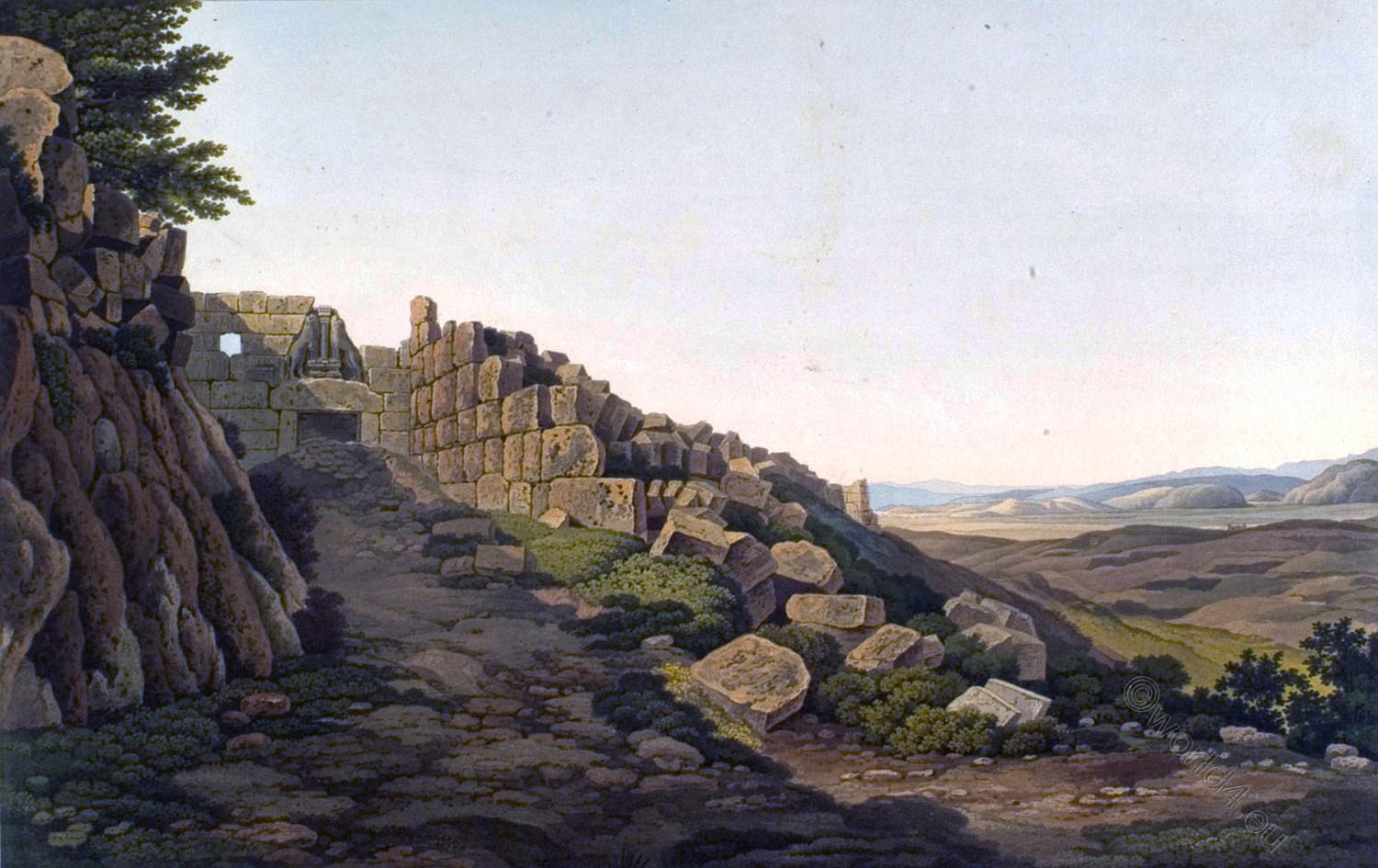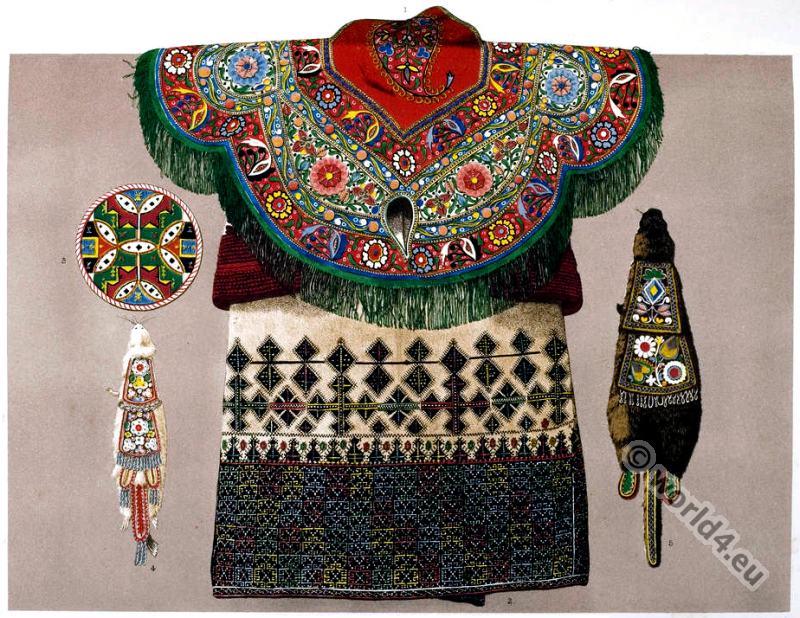The Thermopylae (Ancient Greek Θερμοπύλαι Thermopylai) were a narrow point between the sea and the Kallidromos Mountains in Central Greece (also Trachinian Rocks) with high strategic value in antiquity, being the only route from the Malian Gulf coast to Inner Greece.
Herodotus reports that the passage was half a plethron (about 15 m) wide and had room for only one chariot at the two narrowest points (Alpenoi and Anthele). This is why Thermopylae was repeatedly the scene of important military manoeuvres or major battles in Greek history. The most famous is the First Battle of Thermopylae of 480 BC, part of the Persian Wars.
In 480 BC, a large Persian army under King Xerxes I stood before this passage. The far more numerous Persians were able to force the breakthrough and wear down the remaining Greek forces. The majority of the Greeks retreated in time. The Spartan king Leonidas was in command of the Greek troops.
The majority of the Spartan troops had not moved out. According to Herodotus, the Greeks did not move from their position for days and inflicted heavy losses on the Persians. Only the betrayal by Ephialtes of Trachis (Herodotus VII 213f.) allowed the Persians to bypass the Greek lines over the mountains, the Anopaia trail south of the coastal ridge, and to encircle the Greek troops.
Leonidas acted from now on in the knowledge that a complete retreat would result in annihilation by the Persian cavalry. He decided to hold the bottleneck with his 300 Spartans to cover the withdrawal of the main Greek army. Other troops, whose homelands lay directly behind the pass and would therefore be immediately exposed to plunder by the Persians, joined Leonidas. A total of about 1000 Greeks seem to have remained to cover the retreat – according to Herodotus the Thespians and the Thebans. After Leonidas fell, all the remaining Spartans and Thespians were killed. The Thebans had surrendered in time.
On this site is a monument often referred to as the “Tomb of Leonidas”; however, Leonidas was buried in Sparta. It is rather a victory stele. According to tradition, it bore as an inscription (epigram) a distich that was often wrongly attributed to Simonides of Keos:
O stranger, tell the Lacedaemonians that
we lie here, obedient to their words.
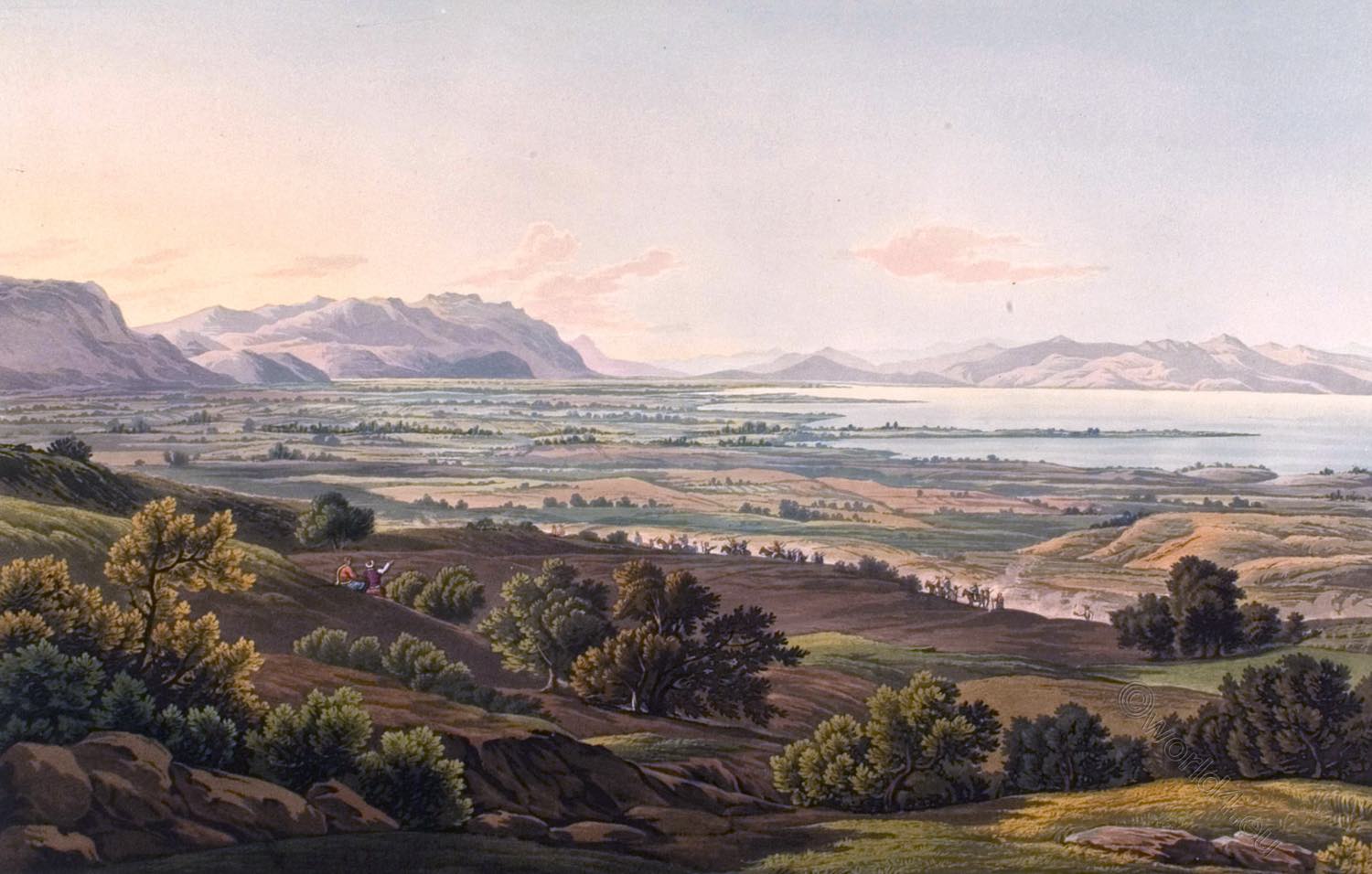
PASS OF THERMOPYLAE
by Edward Dodwell.
THIS view was delineated on the approach to Thermopylae from Locris Hypoknemis. The mountain on the left is part of Knemis, which gave its name to the country which it traverses.
Beyond Mount Knemis the eye is attracted hy the massy form of Mount Oeta, covered with forests and broken with glens and valleys. The sun was setting behind the mountain, which was enveloped in a tint of aerial blue, and threw its long shadows over the even surface of the Locrian plain.
The pass of Thermopylae is at the extreme foot of the mountain, and at that spot is the commencement of the Thessalian territory, where the luxuriant plain of Trachis is faintly discerned under the lofty boundary of the Trachinian rocks.
On the opposite side of the Maliac gulf is the long chain of Othrys, which forms one of the great links of the Thessalian mountains. The long and outstretching points of land, which enter the Maliac gulf from the Locrian shore, are formed by the accumulation of mud and sand that is carried down by the impetuosity of the streams which are rolled from the heights of the Knemidian mountains.
The greater part of the plain over which the eye expatiates is without inhabitants and cultivation; but wherever the hand of industry directs the plough the soil teems with exuberant fertility, and the climate is so happily tempered that the crops arc never nipped by the frost, nor parched by the drought. The streams which flow from the Knemidian mountains quicken the vegetation and enrich the land.
The figures passing on the road represent the attendants of the author, for as the defiles of Thermopylae are sometimes infested with banditti, it was necessary to be well prepared.
Source: Views in Greece. Drawings by Edward Dodwell. Rod Well and Martin, London, 1821.

